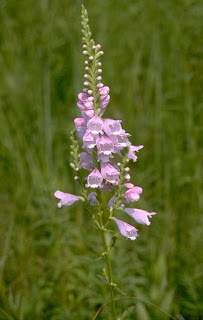What a wonderful series of moments it has been of late. Just two weeks ago, world-renowned botanist Dr. Robert Mohlenbrock (
http://perspect.siuc.edu/06_sp/mohlenbrock.html ) was leading a wetland plant ID course here at Fermilab. We were honored to share with him the collaborated efforts of many, led chiefly by the late Dr. Robert Betz to make the natural areas of Fermilab what they are today. This was indeed inspiring to us who are directly involved in the current land management and also who have the vision to progress into future management of this very special green space within the Chicago region. Now, two weeks later, I am back home in Carbondale, IL. This place is also home to Southern Illinois University, my recent alma mater. The department of Plant Biology is where I roamed from 2004-2009 and finished both my Bachelors and Master of Science degrees. These halls and offices were also the place where Dr. Mohlenbrock worked out of from 1957-1990. Before him, the Botany department was founded by the late Dr. George French whom French's shooting star is named after: Dodecatheon frenchii. Dr. French also founded the SIUC Herbarium, from where I am working out of today. Mohlenbrock helped update and curate this herbarium during his tenure and used it extensively as he published his many volumes and papers. Now, as I go about my work for Fermilab from the SIUC Herbarium, I am unexpectedly greeted by the pressed plant samples of these two legendary botanists. Dr. French's samples from the late nineteenth century when the forests of southern Illinois still held the components of an intact ecosystem, of pre-settlement wilderness. Mohlenbrocks handwriting and samples on the plants key me into the details that are shown in his books I use.
I am here working on the notoriously difficult grass-like plants known as the Sedges and Rushes. In the Spring of 2009, Bob Lootens and I visited Dr. Betz' wife. It was in their home that she presented to us two small wooden boxes and proclaimed "I don't know what to do with these". Bob and I looked at each other with curiosity and opened the boxes. The inside revealed Dr. Betz' home collection of Sedges and Rushes, each specimen lightly pressed and dried, glued to a large index card, wrapped gently in a plastic sandwich bag, and, most importantly, labeled with the species name. I was extatic. We surely had a use for these specimens at Fermilab. Sedges and Rushes are an important component of not only wetlands, but also prairies and woodlands and with his collection, we could go leaps and bounds further in identifying what we have on the Fermilab site. Not only that, but we can then determine which ones we can collect seed from and which we might trade for with local forest preserves.
So it is now, in the herbarium, going through each specimen, referencing the books 'Plants of the Chicago Region' by Swink and Wilhelm, 'Kane County Wild Plants and Natural Areas' by Dick Young, 'Illustrated Flora of Illinois, Sedges: Carex' by Dr. Mohlenbrock, 'Distribution of Illinois Vascular Plants' by Mohlenbrock and Ladd, and all the pressed samples from the SIU Herbarium, of which there are many. I am taking notes, taking macro-lens photographs, and beginning to catalog what species are correctly labeled from Betz and which need updating. This information will be used to ID the Sedge samples the FNA Interns collected all summer as a side project. Just like our prairie plants reference catalog, we will put together a nice one for these grass-like plants, complete with photos, samples, and key characters for easy field ID.
All the while, the connections of our common plant interests are so very evident. I have this place to myself, in the quiet depths of time I am going back to samples from the 1800's. I have just taken a dusty book off the shelf. It is the 1st Edition of Floyd Swink's 'Plants of the Chicago Region' circa 1969. It seems frail from age, but moreso from use. As I open the cover, I notice that the owner has signed their name on the upper right hand corner of the first page. It reads: Robert H. Mohlenbrock. I have come across some of Swink's original plant samples too. They are from the mid-1960's and in the end they have found their home in Carbondale. Some of these samples are stamped as used for the 4th Edition of he and Wilhelm's book. Corrections to scientific names are handwritten by Wilhelm in 1992.
So here I am, a 29 year old ecologist and the year is fading to 2010. These names and relicts from the botanical past surround me. The work I do is dependent on them. Even though now I have the internet and photo databases and blogs right here at my fingertips, I still prefer to be in company with those who took the time and made the case for a better world. A better world through plants.
Ryan E. Campbell
Consulting Restoration Ecologist
Fermi National Accelerator Laboratory
www.fermilabnaturalareas.org
Phone: 618-203-3882
Email: ryancamp@fnal.gov











